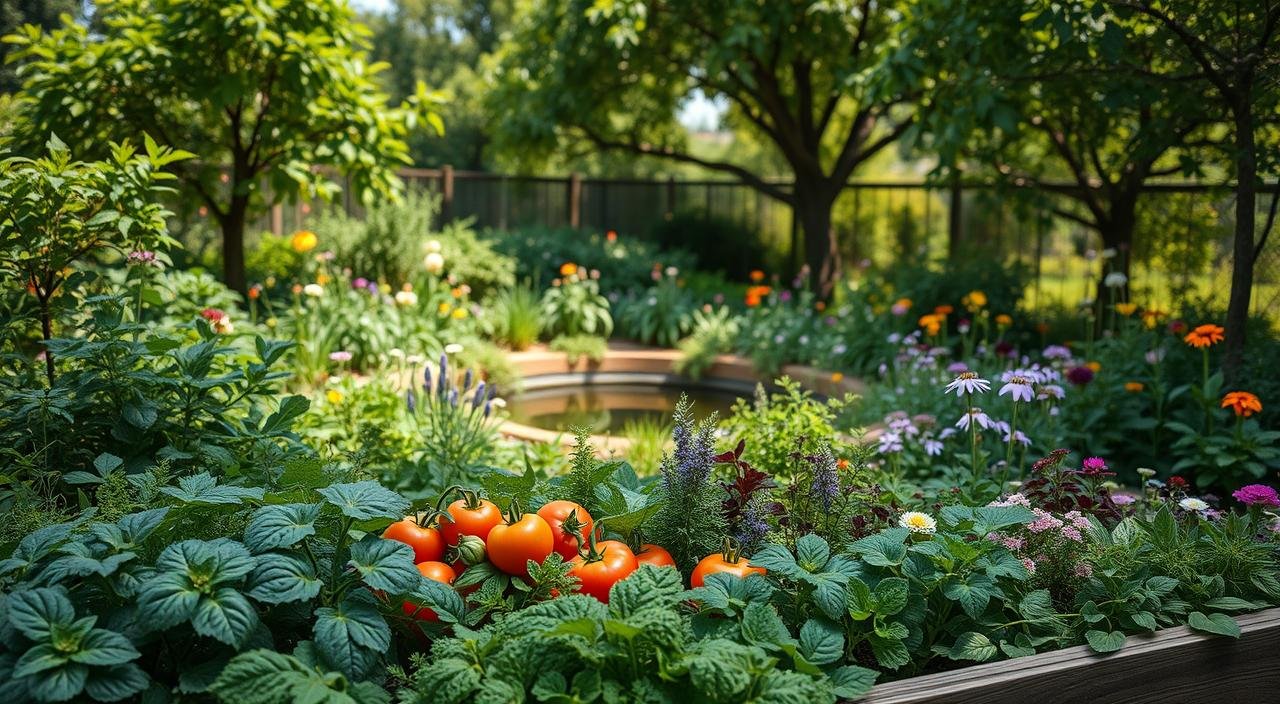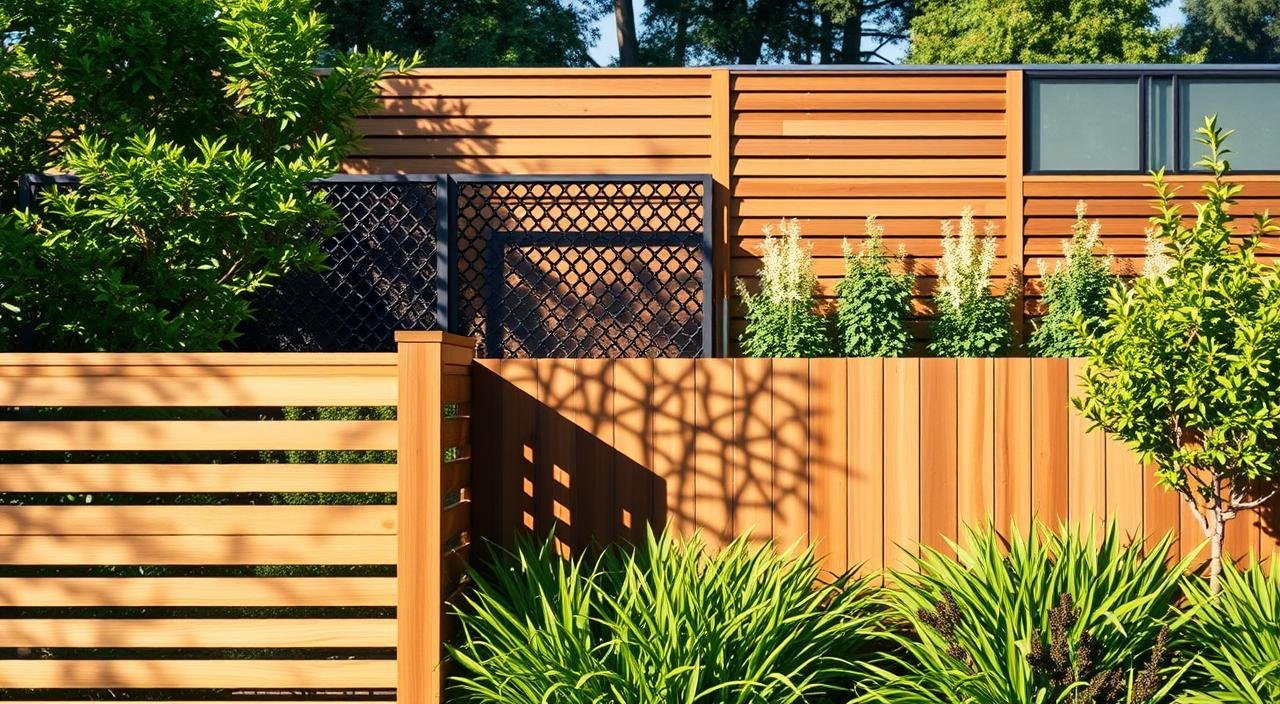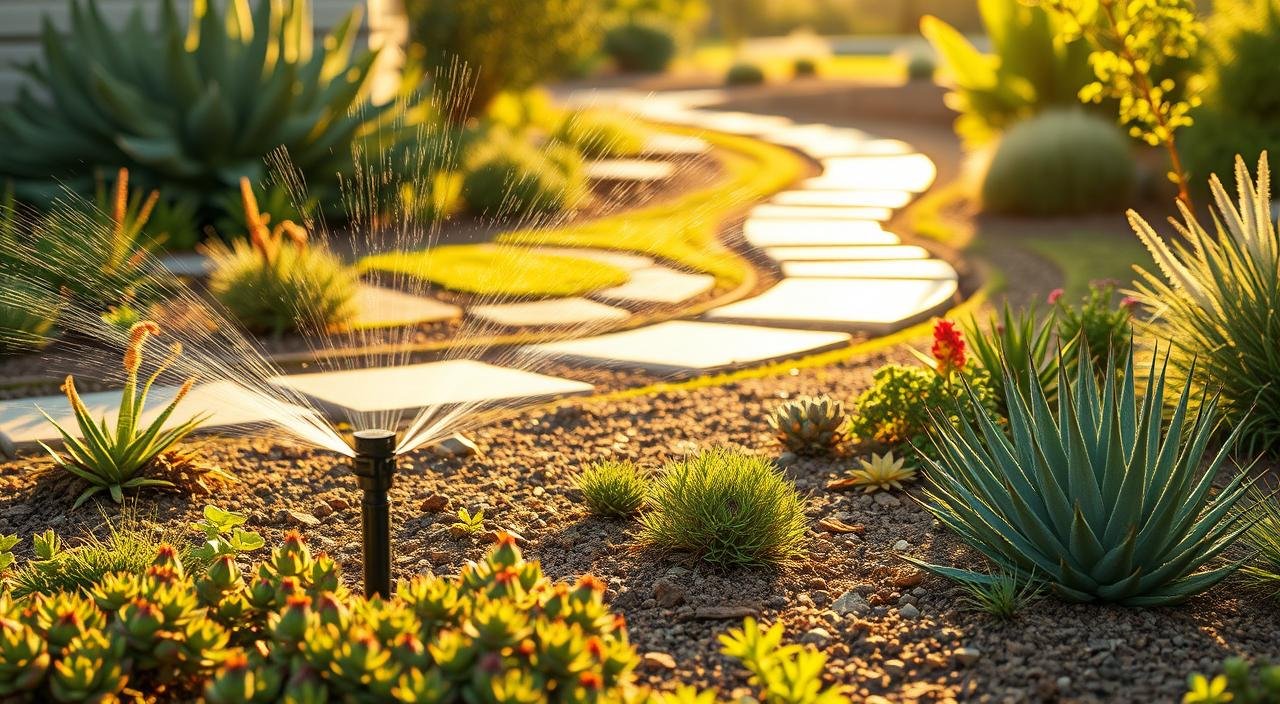Micro-Zone Gardening: The Secret to Thriving Plants
Ever ponder why some gardens flourish effortlessly, while others face challenges despite hard work? The answer often lies in understanding our unique environmental conditions. Welcome to the world of micro-zone gardening! By delving into garden micro-zones, you can unlock your garden’s full capacity for remarkable success. In this guide, I’ll share practical advice to help you create a lush, vibrant landscape suited to your local microclimate.
Grasping the subtleties of microclimate gardening and applying landscape architecture can boost plant diversity and garden success. Let’s explore how micro-zone gardening can transform your outdoor space!
Key Takeaways: planting zones
- Micro-zone gardening focuses on the unique aspects of your local environment.
- Understanding garden micro-zones can enhance your gardening success.
- Landscape architecture concepts can transform your outdoor spaces.
- By diversifying your plant selection, you can better adapt to microclimates.
- Implementing smart garden design techniques makes gardening more rewarding.
- Practical tips for budget-friendly gardening solutions can lead to thriving landscapes.
The Importance of Understanding Gardening Zones
Grasping the concept of gardening zones is essential for a successful garden. These zones categorize areas based on climate, aiding in the selection of plants that excel in your environment. By learning about gardening zones, you can refine your garden planning and make more informed plant choices.
What Are Gardening Zones?
Gardening zones are geographical areas classified by climate, mainly winter temperatures. This system helps gardeners choose plants that can survive in their locations. The USDA Hardiness Zones divide North America into 11 zones, based on average minimum temperatures.
Different Gardening Zone Systems
The Sunset Western Garden Book offers another valuable tool for gardeners. It categorizes regions not only by temperature but also by rainfall, humidity, and other micro-environments. This approach provides a more detailed gardening plan. Understanding these systems can revolutionize your plant selection process.
Introducing Garden Micro-Zones
Understanding garden micro-zones can greatly enhance your gardening strategies, giving you the edge for plant success. These localized areas within your garden feature unique climate conditions that can vary significantly from the surrounding spaces. Recognizing these variations is essential for tailoring your planting choices and improving overall garden performance.
Definition of Garden Micro-Zones
Garden micro-zones are specific sections of your outdoor space where distinct climatic conditions exist. Factors such as sunlight, wind exposure, and moisture levels can differ drastically even within a small area. By identifying these micro-zones, you can optimize your local climate to support a wider range of plants that might not thrive elsewhere.
The Role of Microclimates in Gardening Success
Microclimates play a vital role in determining plant success. For example, areas near walls may retain heat and create a warmer space ideal for more delicate plants. In contrast, shaded spots or those exposed to strong winds may require hardier varieties. Employing a strategic approach to garden micro-zones ensures you maximize your planting. This allows various species to flourish based on their specific environmental needs.
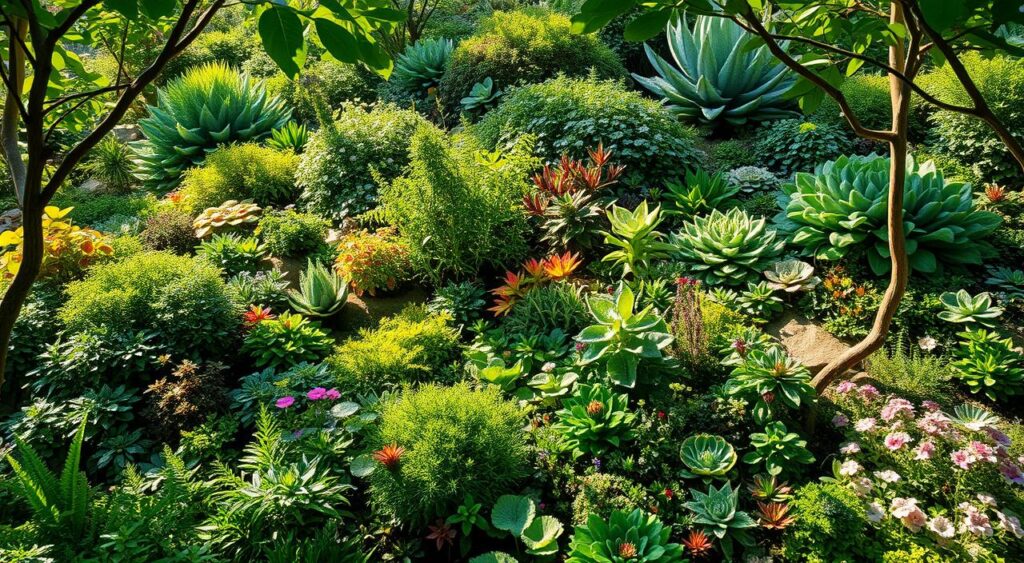
How to Identify Your Planting Zone
Starting your gardening journey requires identifying your planting zone. Knowing your zone ensures you choose plants that will flourish in your climate. The Sunset Western Garden Book and USDA Hardiness Zones are key resources for this task. They provide insights into the gardening zones specific to your area.
Utilizing the Sunset Western Garden Book
The Sunset Western Garden Book is a detailed guide for Western United States gardeners. It includes climate zone maps that consider summer highs and winter lows. By using this resource, you can accurately determine your gardening zone. This knowledge helps you pick the right plants, leading to a successful garden.
Understanding USDA Hardiness Zones
The USDA Hardiness Zone system offers deeper insights into gardening zones by focusing on winter temperatures. Each zone is based on typical weather conditions, aiding in plant selection. Knowing these zones helps you choose plants that can handle your local climate, boosting your gardening success.
| Zone | Temperature Range | Suitable Plants |
|---|---|---|
| Zone 5 | -20°F to -10°F | Peonies, Lilacs, Certain Tomatoes |
| Zone 6 | -10°F to 0°F | Hydrangeas, Zinnias, Basil |
| Zone 7 | 0°F to 10°F | Figs, Lavender, Roses |
| Zone 8 | 10°F to 20°F | Citrus, Camellias, Agapanth |
By leveraging both the Sunset Western Garden Book and USDA Hardiness Zone information, you’re set to make informed gardening decisions. Understanding your specific gardening zones is a cornerstone for a flourishing garden!
Exploring Microclimate Gardening
Microclimate gardening offers a wealth of opportunities for home gardeners. By understanding microclimates, you can make better choices about plants and garden design. Every small difference in temperature, moisture, and humidity creates unique garden environments. Tailoring your gardening to these specifics can greatly enhance plant success.
The Characteristics of Microclimates
Microclimates have distinct features. Temperature, for example, greatly affects plant growth. Sunlit areas are often warmer than shaded ones. Soil moisture levels vary, guiding where to plant certain species.
Humidity levels change based on wind, structures, or nearby water. Knowing these differences lets you craft a garden that thrives in its microclimates.
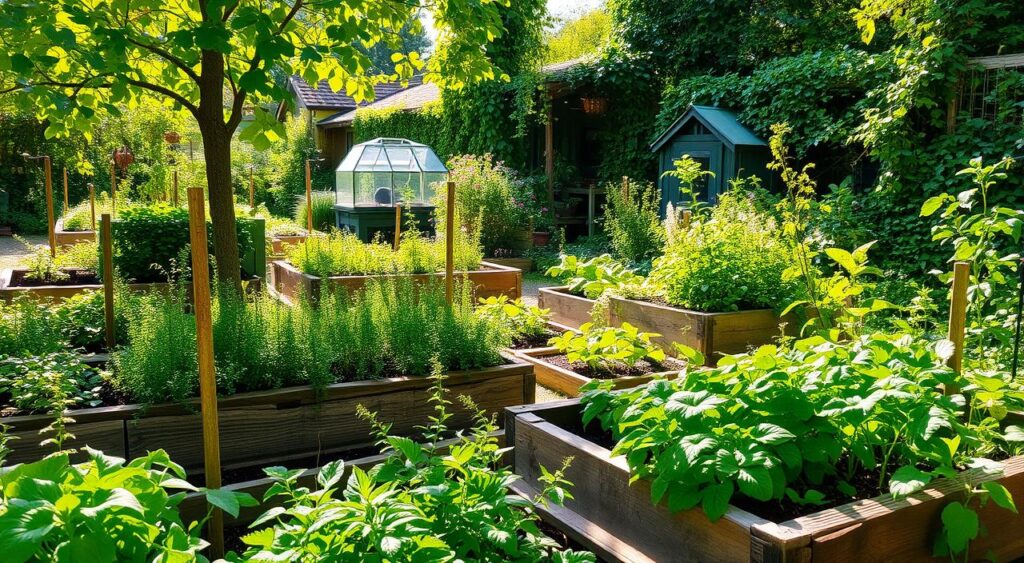
The Mediterranean Climate and Its Impact on Gardening
The Mediterranean climate brings unique challenges and opportunities for gardening. It’s known for mild, wet winters and long, hot, dry summers. Understanding these conditions is key to selecting the right plants and gardening techniques.
Plants adapted to this climate have developed remarkable survival strategies. Their ability to endure drought is essential for a successful garden. By choosing plants that thrive in these conditions, you can create a lush, vibrant garden that complements the landscape. Native species are often a good choice, as they are well-suited to the local climate and require less care.
Practicing eco-friendly gardening is critical in the Mediterranean climate. Using organic methods, mulching, and water-efficient irrigation systems can make your garden more resilient. It also supports environmental sustainability. By grasping the climate’s effects on gardening, you can develop a garden that flourishes and benefits the ecosystem.
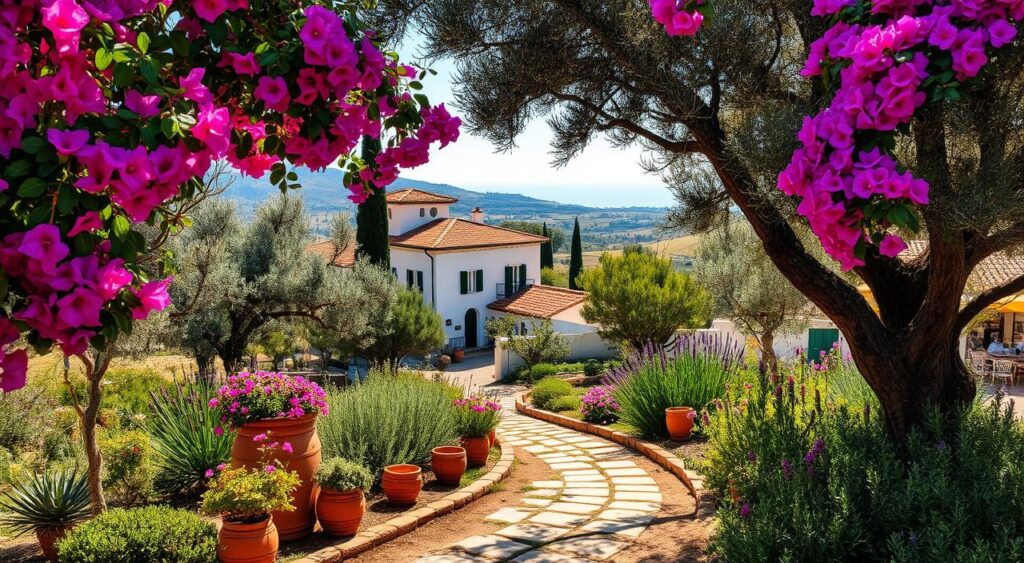
| Plant Type | Adaptation | Benefits |
|---|---|---|
| Aloe Vera | Drought-resistant leaves | Minimal water usage |
| Lavender | Deep root systems | Thrives in poor soil conditions |
| Olive Tree | Heat tolerance | Long lifespan with low maintenance |
| Rosemary | Thin, needle-like leaves | Reduces water loss |
Factors Influencing Micro-Zone Gardening Success
Understanding the factors that influence micro-zone gardening can significantly enhance your gardening success. Topography plays a key role, impacting local conditions, temperature, and precipitation distribution. Let’s explore how these elements come together to shape your garden.
Topography and Its Effects on Microclimates
Topography directly affects micro-zone gardening. Features such as hills, valleys, and slopes influence how sunlight and moisture are distributed throughout your garden space. For instance, valleys often trap cold air, leading to cooler temperatures. Higher elevations can experience warmer conditions. Recognizing these variations is critical for plant growth, as different species have distinct temperature and moisture preferences.
Vegetation’s Role in Microclimate Variability
The type and density of vegetation further complicate the microclimates within your garden. Trees and shrubs can provide shade, reducing soil temperature and altering moisture retention. This interplay can create unique pockets where specific plants thrive, tailored to local conditions. Understanding the vegetation effects allows you to select plants that not only survive but flourish in their designated zones.
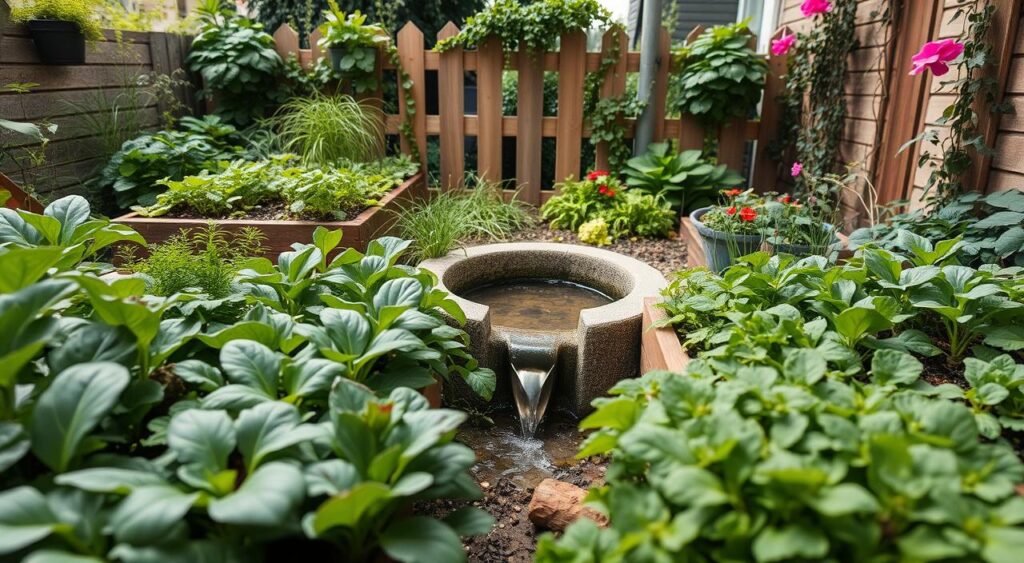
The Benefits of Micro-Zone Gardening
Micro-zone gardening unlocks a realm of possibilities often overlooked by gardeners. It tailors to specific garden conditions, unlocking numerous benefits. Let’s dive into how this method can transform your gardening journey!
Enhanced Plant Diversity
Micro-zone gardening stands out for its ability to boost plant diversity. It allows you to identify and cater to the unique needs of different garden zones. This leads to a more varied and vibrant landscape. It also fosters a healthier ecosystem by attracting a wider range of pollinators and beneficial insects.
Improved Water Management
Micro-zone gardening simplifies water management. It helps you understand and meet the specific water needs of your plants. This approach ensures plants get the right amount of water, reducing waste. It supports plant health and conserves water, making it a sustainable gardening practice.
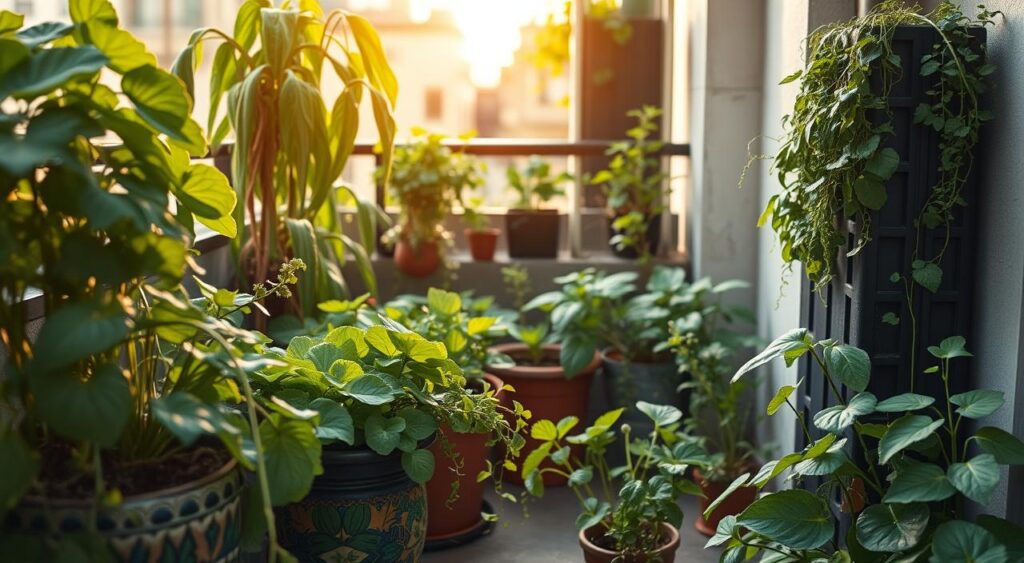
Designing Your Garden for Micro-Zones
Creating a garden that thrives in various micro-zones enhances both aesthetics and functionality. Thoughtfully planning your garden design is essential to cater to the distinct characteristics in each area. By implementing intelligent plant selection, you can choose plants that flourish in specific conditions, promoting vibrant outdoor experiences.
Intelligent Plant Selection Based on Zones
Intelligent plant selection plays a critical role in micro-zone design. Selecting native and adaptive plants that suit the unique conditions of sun, shade, moisture, and soil types leads to healthier plants. This approach promotes biodiversity and can transform your garden into an oasis that attracts beneficial insects and wildlife. Integrating plants that require less water supports sustainable practices and enhances outdoor comfort.
Creating Comfortable Outdoor Spaces
A well-designed garden goes beyond just plant selection. Consideration of paths, seating areas, and sheltered spots enriches the experience of outdoor living. Thoughtful landscape architecture can maximize your garden’s relaxation and enjoyment. Combining hardscapes with softscapes creates inviting outdoor spaces where you can unwind. To learn more about water management and design elements, check out this guide on rain gardens, which highlights ways to improve your landscape while supporting local ecosystems.
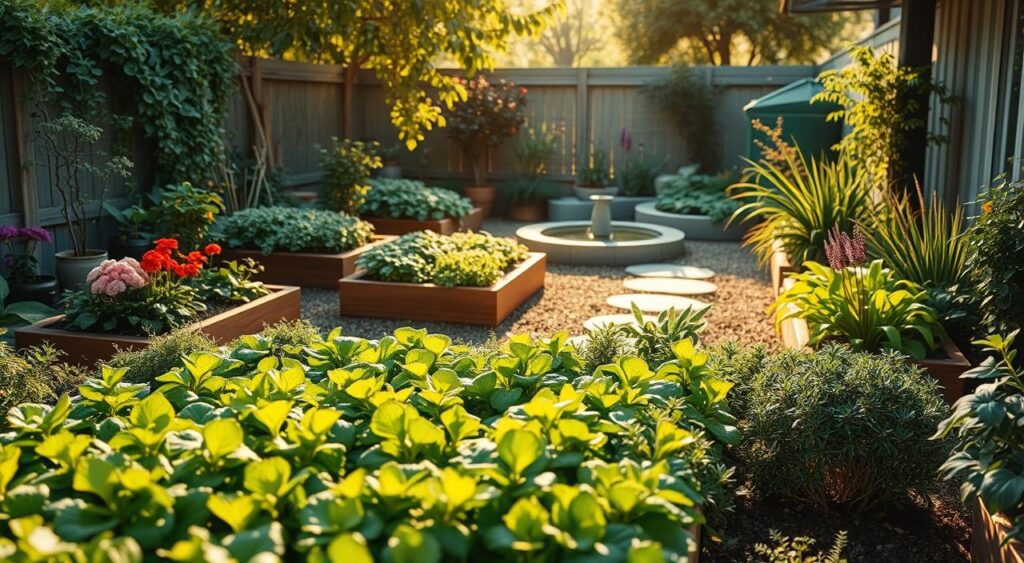
Planting Strategies for Different Micro-Zones
Successful gardening hinges on mastering planting strategies for various micro-zones. Each micro-zone presents unique growing conditions, shaped by sunlight, temperature, and moisture. Grasping these differences is key to refining your plant selection.
Consider the benefits of companion planting. This method pairs plants that enhance each other’s growth. For example, tomatoes and basil together can ward off pests. Carrots and onions, when planted together, foster healthy growth. Such strategies boost garden health and space efficiency in micro-zones.
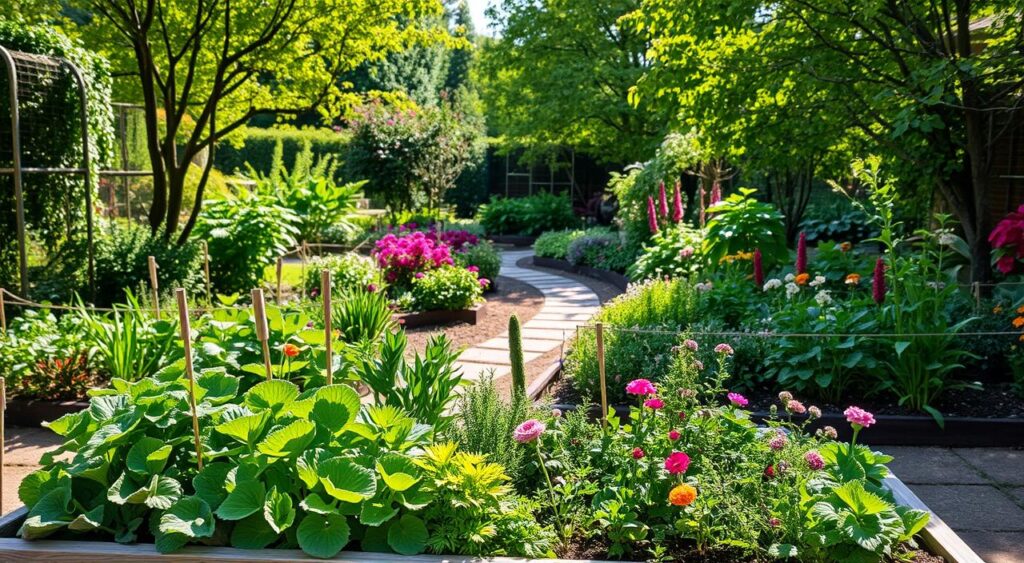
Crop rotation is another critical aspect of effective planting. It keeps soil fertile and prevents nutrient loss. By changing plant types seasonally, you combat pests and diseases, adapting to each micro-zone’s specific needs.
Knowing what your plants need is fundamental for a flourishing garden. Some plants love full sun, while others prefer shade or partial sun. By matching plants to their ideal micro-zone conditions, you ensure a garden full of life and color.
As you explore planting strategies, remember to choose plants that fit your micro-zones and complement each other. Embracing the diversity of different micro-zones unlocks your garden’s full capacity for growth and beauty!
Recognizing and Utilizing Local Microclimates
Understanding local microclimates is key to maximizing your garden’s full capacity. These unique climate conditions can elevate ordinary planting to exceptional levels. By studying your garden’s specific environmental traits, you can pinpoint the best spots for different plants. This approach boosts growth and productivity.
Examples of Ideal Micro-Zone Planting Areas
Consider the benefits of various micro-zones in your outdoor space. For example, south-facing walls soak up sunlight, creating a warm microclimate ideal for heat-loving plants. On the other hand, shaded spots, like those under mature trees, offer cooler conditions perfect for more delicate species. These observations provide valuable insights into effectively using micro-zones.
- South-facing walls: Great for sun-loving plants like tomatoes and peppers.
- Shaded groves: Ideal for ferns and hostas that thrive in cooler, moist conditions.
- Low-lying areas: Often retain moisture, making them perfect for moisture-loving plants.
- Windbreaks: Areas shielded from harsh winds can support more sensitive vegetation.
By recognizing and understanding these local microclimates, you can choose the best options for each unique zone. This tailored approach not only enhances your garden’s aesthetic appeal but also increases the success of your planting endeavors.
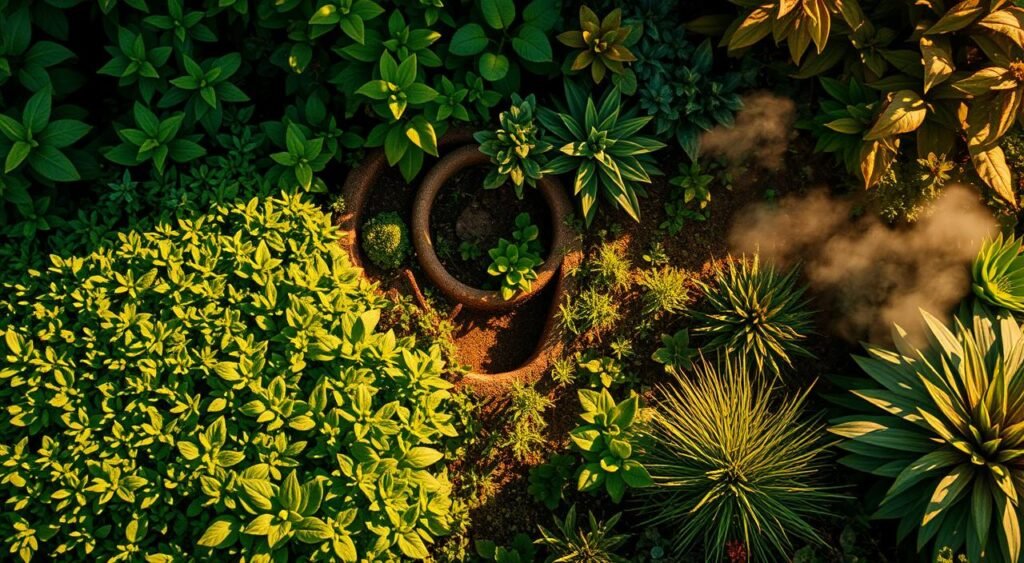
Adapting to Climate Change in Your Garden
Adapting to climate change is key in sustainable gardening. Weather patterns are changing, and extreme conditions are more common. To keep your garden thriving, choose resilient plants that can handle these shifts. These plants not only survive but also strengthen your garden’s ecosystem.
Ecological practices boost your garden’s resilience. Techniques like composting and organic fertilization improve soil health. This helps plants deal with climate change stressors. By avoiding chemicals and using organic matter, you support sustainable gardening.
Effective water management is essential. Rainwater harvesting systems conserve water and ensure plants stay hydrated. This method greatly reduces environmental harm and supports a healthy ecosystem. Mulching also helps keep soil moist and promotes nutrient cycling.
By adopting these strategies, you not only protect your garden but also build a harmonious relationship with nature. You can create a sustainable haven that benefits the environment and brings joy through a resilient garden.
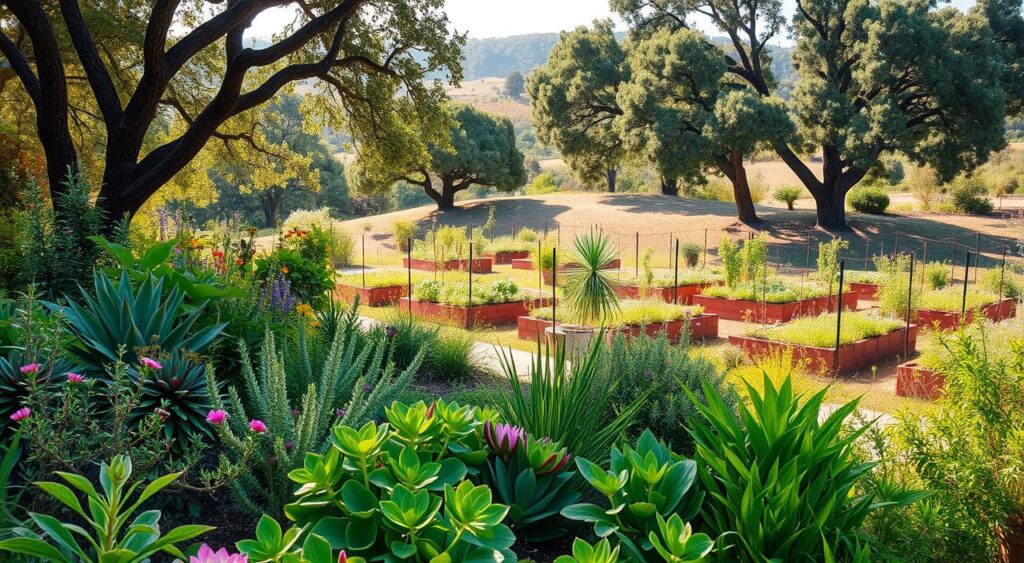
Case Study: Micro-Zones in a Residential Garden
Exploring a specific case study highlights the impact of micro-zones analysis on gardening success. In this residential garden, the varied local conditions offer a canvas for diverse plant life. By grasping these unique microclimates, homeowners can refine their gardening tactics. This leads to the full realization of their landscape’s capabilities.
Analyzing the Microclimates within a Garden
This garden is divided into several distinct zones, each with its own microclimate. These conditions affect plant growth differently. Soil quality, sunlight, and moisture levels vary, influencing which plants thrive in each spot.
- Sunny porch area: This micro-zone receives full sunlight, ideal for heat-loving plants such as tomatoes and peppers.
- Shady corner: In contrast, this area shelters ferns and hostas that require less sunlight.
- Moist hilltop: The slope captures and retains moisture, perfect for growing hydrangeas and other moisture-loving plants.
Through micro-zones analysis, I can choose the right plants for each area. This strategy boosts gardening success and turns my garden into a vibrant oasis. It showcases a visually appealing and diverse landscape.
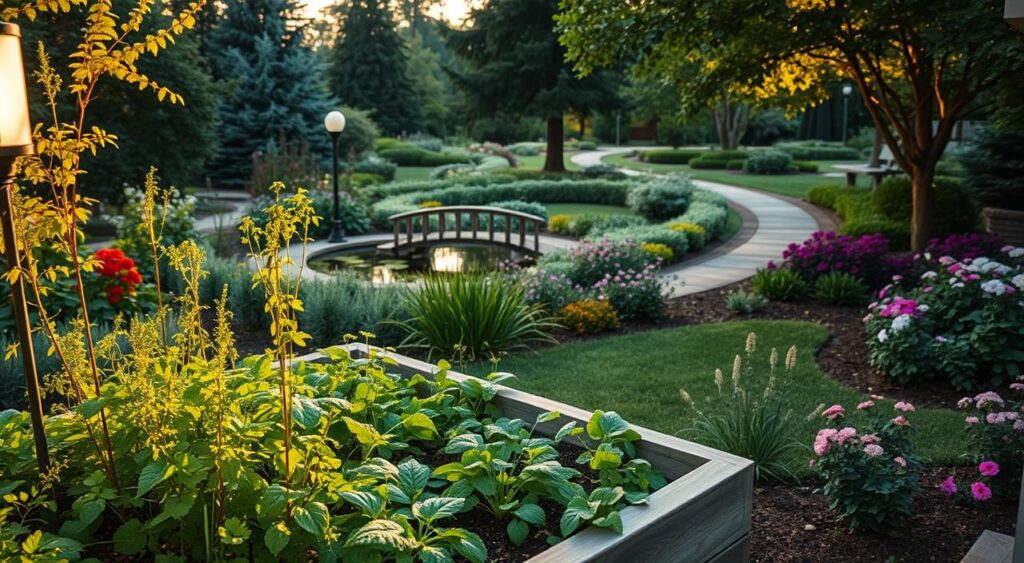
| Micro-Zone | Sunlight | Soil Type | Ideal Plants |
|---|---|---|---|
| Sunny Porch Area | Full Sun | Loamy | Tomatoes, Peppers |
| Shady Corner | Partial Shade | Sandy | Ferns, Hostas |
| Moist Hilltop | Filtered Sun | Clay | Hydrangeas, Astilbes |
Conclusion
Our journey through micro-zone gardening reveals the importance of understanding your garden’s unique environment. By recognizing the specific conditions of your space, you can craft a landscape that maximizes your gardening efforts. This approach leads to more effective gardening practices.
Adopting sustainable practices benefits not only your plants but also your local ecosystem. By integrating your knowledge of local gardening zones and microclimates, you can create a vibrant outdoor space. Each small change can significantly enhance your garden’s health and beauty, ensuring it thrives all year round.
As you continue your gardening adventure, remember that confidence in your design and planting strategies is key. It will lead to gardens that flourish for years. Let’s embrace the creativity of micro-zone gardening and watch our gardening dreams come to life!
FAQ
What is micro-zone gardening?
How do I identify my gardening zone?
What are some factors that influence micro-climates in my garden?
Why is plant diversity important in micro-zone gardening?
How can I design my garden with micro-zones in mind?
What planting strategies work best for different micro-zones?
How does climate change affect my gardening practices?
Can you provide an example of successfully utilizing micro-zones in a garden?

AUTHOR: MARIA JOSE VENTRAMELI
Specialist in Home Design, Architecture, and Trends
With years of experience writing for top home and lifestyle blogs, she now contributes to 17Vibes, offering practical, research-backed insights on renovations, smart technology, sustainable building, and modern living trends. Join our Facebook community here
